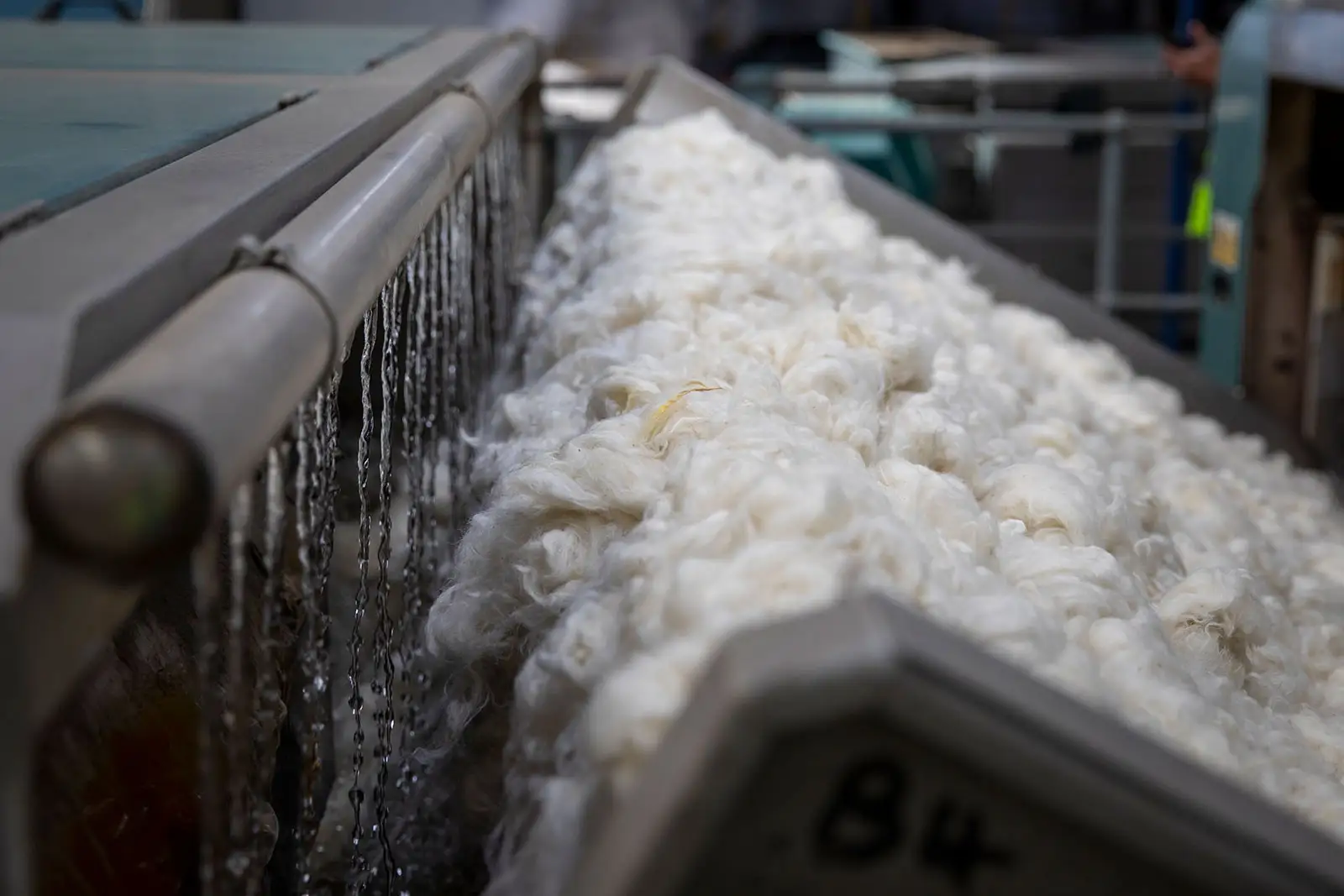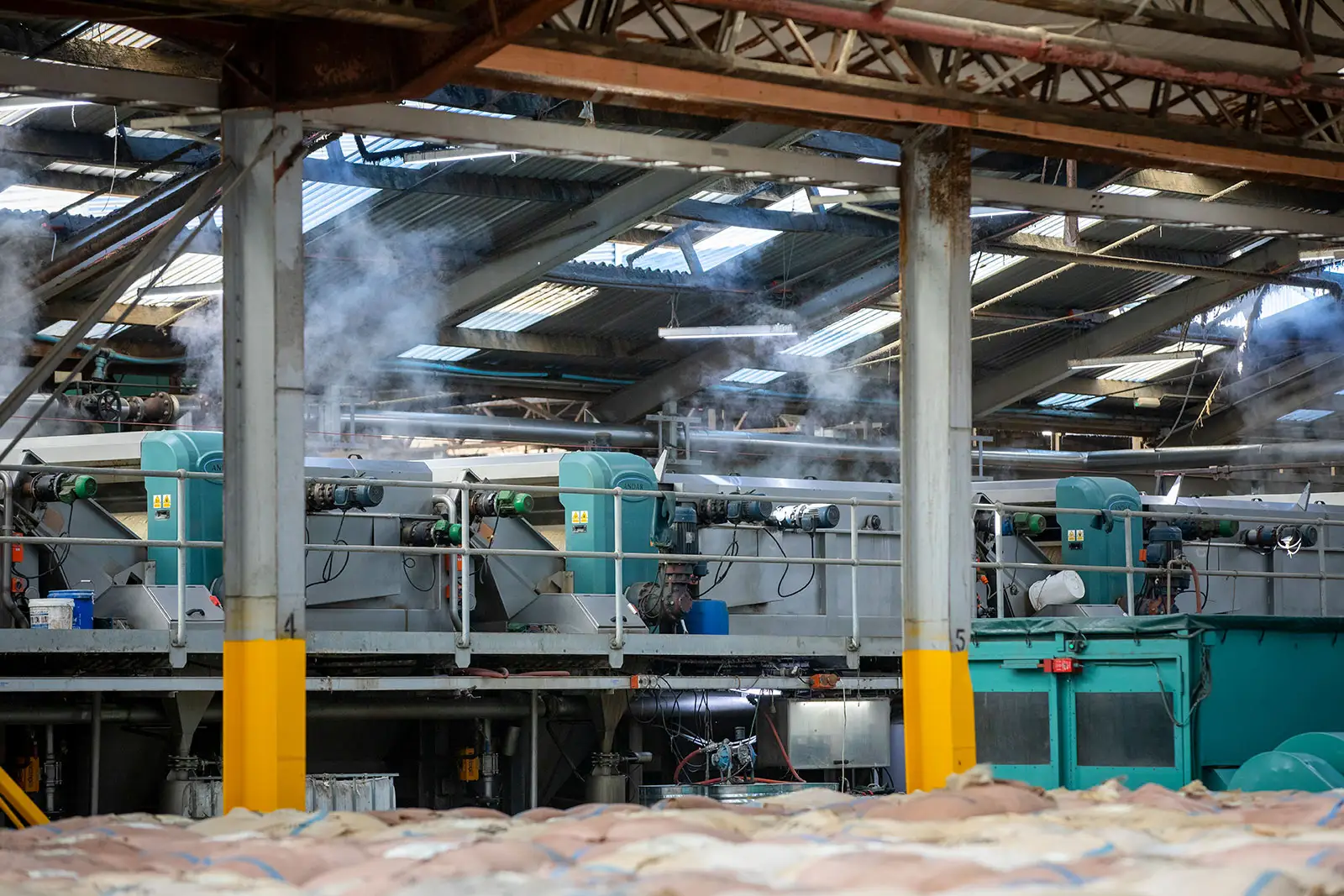Prior to processing into garments or carpets, wool needs to be cleaned. It’s energy intensive, but WoolWorks – the world’s largest wool scourer – has long been a champion of environmentally sustainable practices.
The company has worked with EECA since 2016 to reduce its energy usage. As part of that journey, the team’s latest project has seen a successful switch to electricity, to power the Washdyke site near Timaru – a highly innovative initiative.
This has involved replacing a coal-fired boiler with an 8MW electric boiler, which produces steam and a new industrial heat pump generating hot water – cutting 11,000 tonnes of CO2 emissions a year.
It marks a huge milestone for the company and for Wool Inc. New Zealand, says Shane Thurlow, General Manager at WoolWorks.
“The business is looking at what the next 10-20 years needs to look like. To be successful we must make a change.”

Big gains for first movers
“The ongoing benefits for the wool industry are significant. Customers worldwide that have joined the Science Based Targets initiative (SBTi) program are now wanting to understand what companies like ours are doing in terms of reducing their carbon footprint,” says Rosstan Mazey, CEO of WoolWorks Ventures.
He says “eco-credentials” are of growing value for the wool supply chain and there is rapid international adoption of programs that monitor companies reducing their carbon footprint.
“This is a unique advantage for New Zealand suppliers of wool products who embrace a sustainable value chain through to the end consumers.
“The WoolWorks investment to decarbonise will lead to positive benefits for the New Zealand farmer, especially those who have carbon positive or low carbon farming solutions as our wool exporters will be able to market the wool differently into eco-conscious supply chains.”
Across the business, WoolWorks has committed to a 46% reduction of CO2 emissions by 2030 vs 2019 baseline year and with the emissions reduction programme in Timaru, they are set to achieve this in 2024. WoolWorks has taken the reduce approach to emissions rather than offsetting.
“Decarbonisation is one of those steps that we needed to take so when our customers ultimately use the product of our farmers they can understand that is being done in an environmental and sustainable manner – and that’s our point of difference,” says Mazey.
“Decarbonisation is one of those steps that we needed to take so when our customers ultimately use the product of our farmers they can understand that is being done in an environmental and sustainable manner - and that’s our point of difference.”
Decreased emissions, increased productivity
Woolworks is aiming to achieve zero emissions and is set to achieve that by addressing the type of energy they use – and how – directly.
“We're one of the world's best in terms of total usable energy per kilogram of wool and that started to drive our thinking in terms of how can we be better. We’re continually looking at ways to reduce the impact of our operations on the environment,” says Thurlow.
WoolWorks washes wool so it can be processed into the next stage. It's then blended and assembled into 20 tonne lots for export customers.
The washing process is very similar to an automatic washing machine but on a much larger scale. The wool goes through three bowls of heated water at different temperatures. The two scour lines are up to 100 metres long and 3 metres/2.4m wide and contain 27 cubic metres of water, so there are significant energy costs to heat the water and run the machines.
When working with EECA to improve this process the team looked at what energy was being lost and how it could be recaptured using a heat pump.
The heat pump works by taking latent heat out of the wastewater at 35 degrees and then bringing it back up to between 85 degrees and 90 degrees – meaning water can now be heated in a more cost and energy efficient manner.
Alongside the electrode boiler, demand reduction projects have reduced the site’s energy footprint, improved productivity and taken a massive step towards the ultimate goal of zero emissions.

An example in successful collaboration
As well as providing industrial co-funding to replace the coal-fired boiler, EECA also supported in a number of other ways at the Timaru site.
The company partnered with EECA to create a decarbonisation pathway through the Energy Transition Accelerator and took an energy efficiency first approach, which set WoolWorks up for success for the last stage of fuel switching in an economically sustainable manner.
Woolworks will use Meridian’s Certified Renewable Energy product to purchase renewable energy certificates to verify that the amount of electricity it uses from the grid is matched on an annual basis with electricity produced from Meridian’s certified hydro stations and wind farms.
Background
Woolworks is the largest wool scourer by volume in the world and handles 76 per cent of all New Zealand wool. Every year, the company’s three sites in Napier, Hastings, and Timaru wash more than 100,000,000 kilograms of wool, ranging from superfine merino to crossbred. The company employs 150 people across a wide range of operational, technical, engineering, administrative and management roles.
Read next
-
Red meat, green energy
By switching to cleaner technologies, Alliance Group is helping reduce Southland’s carbon footprint.
-
Hot water, low emissions: Oceania is switching to renewables
Retirement and aged care living provider, Oceania, is upgrading to cleaner technologies in their facilities across New Zealand.
-
Greener greens with less waste
Marlborough-based herb and salad green growers, Thymebank, have switched from coal to wood waste and nut shells for their glasshouse heating.
